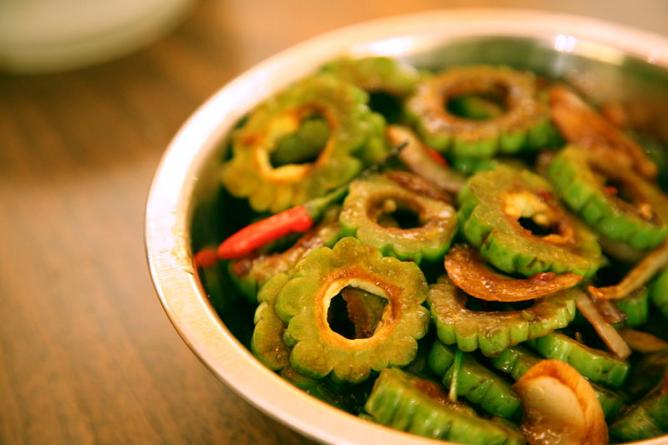Imagine yourself on a culinary adventure in Suriname, a hidden gem nestled in the heart of South America. As you explore the vibrant streets and immerse yourself in the rich culture, you will undoubtedly come across the unique Creole cuisine that defines this country. Suriname’s Creole cuisine is a vibrant fusion of African, Indian, Indonesian, and Dutch culinary traditions. From fiery curries to mouthwatering stews, the flavors of Suriname will tantalize your taste buds and transport you to a world where diverse cultures converge on the plate. Whether you are a seasoned foodie or simply someone with an adventurous palate, Suriname’s Creole cuisine promises to be an unforgettable culinary experience like no other.
History of Creole Cuisine in Suriname
Suriname, a small South American country known for its cultural diversity, is home to a rich culinary heritage. The history of Surinamese Creole cuisine can be traced back to the influences of various ethnic groups that have migrated to the country over the centuries. The indigenous people, African slaves, Indian indentured laborers, and Chinese migrants have all contributed to the unique flavors and techniques found in Surinamese cuisine today.
Influences from Indigenous People
The indigenous people of Suriname, including the native Amerindian tribes such as the Arawak and Carib, have had a profound impact on the local cuisine. They introduced ingredients like cassava, sweet potatoes, and various tropical fruits that are still widely enjoyed in Surinamese dishes today. The indigenous people also taught the early settlers how to fish, hunt, and prepare food using traditional cooking techniques.
Influences from African Slaves
During the colonial era, Suriname was a major hub for the transatlantic slave trade. African slaves brought with them their own culinary traditions, which heavily influenced Surinamese Creole cuisine. They introduced the use of hot peppers, okra, and various spices to enhance the flavors of dishes. Additionally, the practice of marinating and stewing meats, as well as the use of leafy vegetables, can be attributed to the African culinary heritage.
Influences from Indian Indentured Laborers
In the late 19th and early 20th centuries, Suriname received an influx of indentured laborers from India. These laborers brought with them a rich culinary tradition that greatly impacted Surinamese cuisine. They introduced spices like turmeric, cumin, and coriander, as well as various Indian cooking techniques such as frying and roasting. The influence of Indian cuisine can be seen in popular Surinamese dishes like roti and bami.
Influences from Chinese Migrants
Chinese migrants, predominantly from the Hakka and Cantonese regions, started arriving in Suriname in the late 19th century. They brought with them a diverse range of ingredients and cooking techniques, which led to the fusion of Chinese and Surinamese flavors. Chinese cuisine introduced stir-frying, steaming, and the use of soy sauce to Surinamese cooking. Dishes like moksi meti, which combines both Chinese and Surinamese ingredients, exemplify the influence of Chinese migrants on Surinamese Creole cuisine.
Key Ingredients in Creole Cuisine
Surinamese Creole cuisine is characterized by the use of a variety of key ingredients that form the foundation of many traditional dishes.
Rice
Rice is a staple ingredient in Surinamese cuisine and is used in a wide range of dishes. Suriname is known for its aromatic and flavorful rice, which is often served with curries, stews, or stir-fried vegetables. Rice also plays a central role in popular dishes like bami, a traditional Surinamese noodle dish.
Hot Peppers
Hot peppers, such as Madame Jeanette and Adjuma, are widely used in Surinamese cuisine to add a fiery kick to dishes. The heat from these peppers adds depth and complexity to the flavors, making each dish unforgettable. Whether they are incorporated into a marinade, a sauce, or used as a garnish, hot peppers are an essential ingredient in Surinamese Creole cuisine.
Salted Meat
Salted meat, particularly salted beef and pork, is a common ingredient in Surinamese dishes. The preservation method of salting was introduced by the African slaves and is still widely practiced today. Salted meat is often used to add flavor to soups, stews, and rice dishes. It is also a key component in traditional Surinamese dishes like pepper pot, a rich and hearty meat stew.
Seafood
Suriname’s close proximity to the Atlantic Ocean makes seafood a prominent feature in the local diet. Fresh fish, shrimp, and crab are popular choices for both traditional and modern Surinamese dishes. Seafood is often marinated, grilled, or used in stews to create delicious and aromatic flavors that reflect the country’s coastal heritage.
Tropical Fruits
Suriname’s tropical climate allows for the abundant growth of a wide variety of fruits. Mangoes, bananas, guavas, and passion fruit are just a few examples of the many fruits that are enjoyed in Surinamese cuisine. These fruits are used in both savory and sweet dishes, such as chutneys, salads, desserts, and drinks, adding a burst of freshness and natural sweetness to the cuisine.
Leafy Vegetables
Leafy vegetables, such as spinach, kale, and amsoi (Chinese cabbage), are commonly used in Surinamese Creole cuisine. These vegetables are often included in stews, soups, and stir-fried dishes. They provide essential vitamins and nutrients, as well as a vibrant color and texture to the dishes.
Spices and Herbs
A wide variety of spices and herbs are used to enhance the flavors of Surinamese dishes. Turmeric, cumin, coriander, ginger, and garlic are just a few examples of the commonly used spices. Fresh herbs like cilantro and parsley are also widely used to add freshness and aroma to the cuisine.
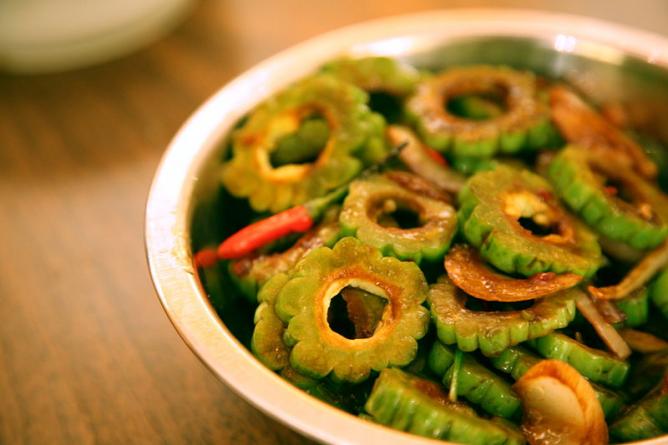
Traditional Surinamese Creole Dishes
Surinamese cuisine boasts a range of traditional dishes that are beloved by locals and visitors alike. These dishes reflect the diverse cultural influences that have shaped Surinamese Creole cuisine over the centuries.
Roti
Roti is a quintessential Surinamese dish that originated from the Indian indentured laborers. It consists of a flatbread, typically filled with curried chicken, beef, or vegetables. The bread is made from a mixture of flour, water, and oil, resulting in a soft and chewy texture. Roti is often served with a side of dhal, a lentil soup, and various condiments, such as sambal and chutneys.
Pom
Pom is a popular Surinamese dish that combines African and Jewish culinary traditions. It is a hearty casserole made from oven-baked grated cassava, mixed with chicken or salted meat, citrus fruits, and various spices. The result is a flavorful and tangy dish that is often enjoyed during special occasions and celebrations.
Saoto Soup
Saoto soup is a famous Surinamese dish that originated from the Javanese community. It is a rich and aromatic chicken soup, typically served with rice, bean sprouts, boiled eggs, and fried onions. The soup is flavored with a combination of spices, including turmeric, ginger, and lemongrass, giving it a distinct and delicious taste.
Moksi Meti
Moksi Meti is a unique Surinamese dish that combines elements of Chinese and Surinamese cuisine. The name “Moksi Meti” translates to “mixed meat,” and the dish usually consists of a combination of roasted or grilled meats, such as chicken, pork, and duck. These meats are marinated in a flavorful blend of spices and soy sauce before being cooked. Moksi Meti is typically served with rice, vegetables, and various condiments.
Pepper Pot
Pepper pot is a traditional Surinamese meat stew that originated from the African slaves. It is a rich and flavorful dish made from salted beef or pork, cassava, vegetables, and a variety of spices. The stew is slow-cooked for several hours, allowing the flavors to meld together and creating a hearty and aromatic dish that is often served during festive occasions.
Bami
Bami is a popular Surinamese noodle dish that has its roots in Chinese cuisine. It consists of stir-fried noodles, typically made from wheat flour, along with a variety of vegetables and meats. The noodles are flavored with soy sauce, garlic, and various spices, giving the dish a savory and umami taste. Bami is often served as a main course or as a side dish alongside other Surinamese specialties.
Bojo
Bojo is a traditional Surinamese dessert that is enjoyed during special occasions and festivals. It is a coconut cake made from grated cassava, coconut milk, sugar, and various spices. The cake has a dense and moist texture, and it is often flavored with cinnamon, nutmeg, and vanilla. Bojo is typically enjoyed with a cup of coffee or tea and is a favorite dessert among Surinamese locals.
Doks
Doks are deep-fried balls of dough that are a popular street food snack in Suriname. They are similar to doughnuts but are usually smaller and denser. Doks can be plain or filled with various sweet or savory fillings, such as cheese, meat, or fruit preserves. They are often enjoyed as a quick and satisfying treat on the go.
Bara
Bara is a type of deep-fried bread that is a favorite snack in Suriname. It originated from the Indian community and is often enjoyed with chutneys and condiments. Bara is made from a mixture of lentil or chickpea flour, water, and various spices. The dough is then shaped into small rounds and deep-fried until golden and crispy. Bara can be enjoyed on its own or filled with a variety of flavorful toppings.
Celebration Foods and Festivals
Surinamese cuisine plays a central role in many cultural and religious celebrations in the country. Here are some examples of how different communities celebrate their festivities with traditional foods.
Javanese and Creole Food during Idul Fitri
During Idul Fitri, the celebration marking the end of Ramadan, the Javanese community in Suriname prepares a wide variety of traditional dishes. These include nasi goreng (fried rice), sambal goreng (spicy stir-fried vegetables), and opor ayam (chicken in coconut curry). These dishes are enjoyed as part of the festive feast, along with sweet treats like klepon (glutinous rice balls filled with palm sugar) and kue lapis (layered cake).
Christmas Dishes
Christmas is a major celebration in Suriname, and traditional Christmas dishes reflect the diverse cultural influences in the country. Surinamese families prepare a feast that includes dishes like pom, roast chicken or pork, baked fish, and a variety of side dishes and condiments. Sweet treats like kerstbrood (Christmas bread), kala (deep-fried sweet dough balls), and oliebollen (deep-fried doughnuts) are also enjoyed during this festive season.
Holi Phagwa Treats
Holi Phagwa, also known as the Festival of Colors, is a Hindu celebration that marks the arrival of spring. During this festival, Surinamese Hindus prepare a range of sweets and snacks to share with family and friends. Traditional treats like gujiya (sweet dumplings filled with coconut or sweetened semolina), burfi (milk-based sweets), and pera (cardamom flavored sweet balls) are made and shared during the festivities.
Maroon Festivals and Cuisine
Maroon festivals, celebrated by the descendants of escaped African slaves, are an important part of Surinamese cultural heritage. These festivals showcase traditional Maroon cuisine, which includes dishes like saoto soup, matu (grilled meat), and kasiri (fermented cassava drink). Maroon festivals are a vibrant and lively celebration of African cultural traditions, with food playing a central role in the festivities.
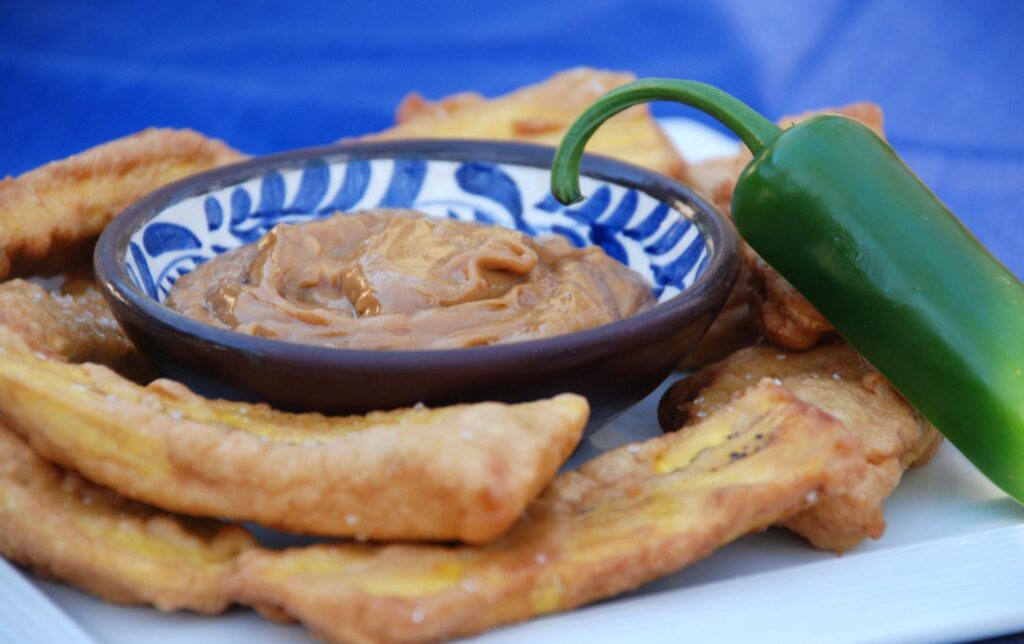
Street Food Culture
Suriname is known for its vibrant street food culture, where locals and visitors can indulge in a variety of delicious and affordable snacks. Here are some popular street food stalls and dishes found throughout the country.
Broodje Pom
Broodje pom is a must-try street food in Suriname. It consists of a soft bun filled with pom, a flavorful and tangy casserole made from oven-baked grated cassava, mixed with chicken or salted meat, citrus fruits, and various spices. The combination of the tangy cassava and succulent meat makes for a delicious and satisfying snack.
Baka Bana
Baka bana, which translates to “fried banana,” is a popular street food snack in Suriname. Ripe plantains are sliced, coated in a batter, and then deep-fried until golden and crispy. Baka bana is often enjoyed with a side of peanut sauce or sambal, adding a spicy kick to the sweet and savory flavors.
Saoto Soup Stall
Saoto soup stalls can be found throughout Suriname, offering this beloved Javanese dish to locals and visitors alike. The stalls serve piping hot bowls of saoto soup, complete with rice, bean sprouts, boiled eggs, and fried onions. The aroma of the soup, combined with the flavorful spices and tender chicken, makes it a favorite comfort food for many.
Bami Stall
Bami stalls are a common sight on the streets of Suriname, serving up plates of delicious stir-fried noodles. The noodles are often cooked with a variety of vegetables, meats, and spices, resulting in a flavorful and satisfying dish. Bami stalls offer a quick and convenient meal for those looking to grab a bite on the go.
Bara Stall
Bara stalls are a popular destination for those craving this Indian deep-fried bread. These stalls serve freshly made bara, often filled with savory fillings like curry chicken, potato, or channa (spiced chickpeas). The aroma of the frying bread, combined with the flavorful fillings, draws in locals and tourists alike.
BBQ and Grilled Meat Stands
Suriname is also home to numerous BBQ and grilled meat stands, where mouth-watering meats are cooked over open flames. Skewers of grilled chicken, pork, and beef are a common sight, along with various grilled sausages and seafood. These stands offer a wide range of flavors, from spicy and smoky to tangy and sweet, making them a favorite spot for meat lovers.
Influence of Dutch Cuisine
Suriname’s colonial history under Dutch rule has left a lasting influence on its culinary landscape. Dutch cuisine has become integrated into the local food culture, resulting in unique dishes and flavors that reflect the fusion of Surinamese and European culinary traditions.
Bitterballen
Bitterballen are a popular Dutch snack that has been adopted and adapted by the Surinamese. These savory meatballs are made from a mixture of beef or veal, broth, butter, flour, and various spices. They are then coated in breadcrumbs and deep-fried until crispy. Bitterballen are often served as a bar snack or appetizer, alongside mustard for dipping.
Erwtensoep
Erwtensoep, or Dutch pea soup, is a hearty and comforting dish that has become a favorite during Suriname’s cooler months. It is made from split peas, vegetables, smoked pork, and various herbs and spices. Erwtensoep has a thick and velvety texture, and it is often served with slices of rye bread and crumbled bacon on top.
Kroketten
Kroketten, also known as croquettes, are another Dutch snack that has made its way to Suriname. These deep-fried rolls are typically filled with ragout, which can consist of meat, seafood, or vegetarian ingredients. The crispy and crunchy exterior, paired with the creamy and flavorful filling, makes kroketten a popular snack choice.
Hutspot
Hutspot is a traditional Dutch dish that is enjoyed in Suriname, particularly during festive occasions. It consists of mashed potatoes, carrots, and onions, which are boiled together until tender and then mashed together. Hutspot is often served alongside meat, such as sausages or roasts, and is a comforting and flavorsome side dish.
Stroopwafels
Stroopwafels, or syrup waffles, are a beloved Dutch treat that has found its way into the hearts and stomachs of Surinamese locals. These sweet waffles consist of two thin layers of baked dough, with a caramel-like syrup filling in the middle. Stroopwafels are often enjoyed with a cup of coffee or tea and are a delightful indulgence.

Fusion and Modern Creole Cuisine
Surinamese Creole cuisine continues to evolve and adapt, incorporating flavors and techniques from various cultures to create fusion and modern dishes that reflect contemporary tastes and trends.
Indo-Surinamese Cuisine
Indo-Surinamese cuisine is a fusion of Surinamese and Indian flavors and techniques. It combines Surinamese ingredients and cooking methods with traditional Indian spices and culinary traditions. Dishes like roti, masala chicken, and fried rice incorporate both Surinamese and Indian elements, resulting in a unique and flavorful cuisine.
Chinese-Surinamese Cuisine
Chinese-Surinamese cuisine is a popular and widely enjoyed fusion cuisine in Suriname. It blends Chinese cooking techniques and ingredients with Surinamese flavors and dishes. Dishes like moksi meti and tjauw min are prime examples of this fusion cuisine, combining marinated meats, stir-fried vegetables, and fragrant sauces to create mouthwatering flavors.
Surinamese-Dutch Fusion Dishes
Surinamese-Dutch fusion dishes have also emerged, combining traditional Surinamese ingredients and flavors with Dutch culinary techniques and influences. For example, Surinamese-style bitterballen, filled with Surinamese spiced meats, provide a unique twist on the traditional Dutch snack. These fusion dishes reflect the cultural blending and creativity that define Surinamese cuisine.
Traditional Cooking Techniques
Surinamese Creole cuisine is characterized by a range of traditional cooking techniques that have been passed down through generations. These techniques ensure that each dish is cooked to perfection and retains its distinctive flavors.
Marination
Marination is a key technique used in Surinamese cooking to infuse meats and vegetables with flavors. Meats are often marinated in a combination of spices, herbs, and other ingredients to tenderize and add depth to the final dish. Marination times can vary, ranging from a few hours to overnight, depending on the desired intensity of flavors.
Stewing
Stewing is a slow cooking method used to cook meats, vegetables, and legumes until they are tender and flavorful. Surinamese stews often include a variety of ingredients, such as meat, vegetables, spices, and herbs. The dish is cooked over low heat for an extended period, allowing the flavors to meld together and create a rich and hearty meal.
Smoking
Smoking is a traditional cooking technique that is often used to add a smoky flavor to meats and fish. Surinamese cuisine incorporates smoking techniques, such as using a charcoal grill or an open flame, to infuse dishes with a distinct smoky aroma. Smoked fish and meats are widely enjoyed and are often used in stews, soups, and snacks.
Grilling
Grilling is a popular cooking method in Surinamese cuisine, especially for meats, fish, and vegetables. Surinamese grilling techniques often involve marinating the meats or fish beforehand to enhance the flavors. The use of open flames or charcoal grills imparts a charred and smoky taste, adding depth and complexity to the dishes.
Boiling
Boiling is a common cooking technique used in Surinamese cuisine for preparing ingredients such as rice, pasta, and vegetables. Surinamese rice, in particular, is often cooked using the absorption method, where the rice is boiled with water and spices until all the liquid is absorbed, resulting in fluffy and flavorful rice.
Frying
Frying is a widely used cooking method in Surinamese cuisine, particularly for snacks and appetizers. Surinamese frying techniques involve deep-frying or pan-frying ingredients to achieve a crispy and golden exterior. Popular fried snacks include bara, doks, and baka bana.
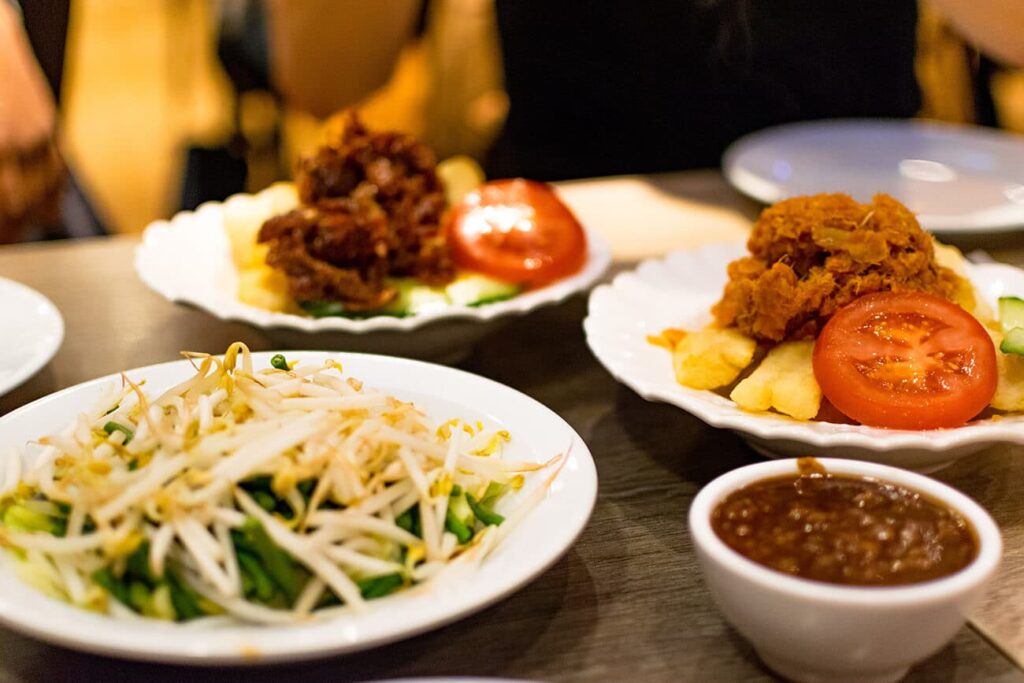
Unique Cooking Equipment and Utensils
Surinamese cuisine also has its own unique cooking equipment and utensils, which are used to prepare and cook traditional dishes.
Tawa
The tawa is a large, flat round griddle that is commonly used in Surinamese cooking, particularly for making roti. The tawa is heated over a flame and is used to cook the roti bread, which is placed directly onto the hot surface. The even heat distribution of the tawa ensures that the roti is cooked to perfection – soft and pliable with a slightly charred exterior.
Bakkebaard
The bakkebaard is a traditional Surinamese utensil that is used to deep-fry small round snacks like doks and bara. It consists of a long handle and a round metal mesh, which is immersed in hot oil to fry the dough. The bakkebaard allows for easy handling and flipping of the snacks, ensuring that they are evenly cooked and crispy.
Neni
The neni is a wooden mortar and pestle that is commonly used in Surinamese cooking to pound and grind spices and herbs. It is an essential tool for creating freshly ground spice blends, such as masala, which are used to season many Surinamese dishes. The neni allows for the release of the natural oils and flavors of the spices, resulting in a more aromatic and flavorful final dish.
Hot Pot
The hot pot is a traditional Surinamese cooking vessel that is used to slow-cook stews and soups. It is a large, heavy-bottomed pot with a tight-fitting lid, designed to retain heat and distribute it evenly. The hot pot is often used for dishes like pepper pot, which require long hours of slow cooking to develop rich and complex flavors.
Brazier
The brazier is a traditional Surinamese cooking appliance, particularly used for charcoal grilling. It consists of a metal container with a low grill rack, allowing the charcoal to be lit and placed underneath for cooking. The brazier is commonly used for grilling meats, fish, and vegetables, providing the necessary heat and smokiness that is characteristic of Surinamese grilled dishes.
Influence of Creole Cuisine on National Identity
Surinamese Creole cuisine plays a significant role in shaping the national identity of the country. It is not only a source of national pride and cultural heritage but also contributes to the promotion of local food and culinary tourism.
Culinary Tourism
Suriname’s diverse and vibrant culinary scene has become a major draw for tourists seeking authentic and flavorful experiences. Culinary tourism has gained popularity in recent years, with visitors eager to sample the traditional dishes and explore the local food culture. Surinamese Creole cuisine has become an integral part of the tourism industry, with culinary tours, cooking classes, and food festivals showcasing the rich flavors and cultural influences of Surinamese cuisine.
Promotion of Local Food
Surinamese Creole cuisine has also played a vital role in promoting local food and supporting local producers and farmers. The use of local ingredients and traditional cooking techniques helps to preserve the country’s biodiversity and agricultural heritage. Surinamese chefs and food enthusiasts actively promote and highlight the importance of using locally sourced ingredients, supporting sustainable practices, and preserving traditional recipes and cooking methods.
Symbolic Importance
Surinamese Creole cuisine holds a symbolic importance as a unifying element in a country marked by cultural diversity. The fusion of ingredients, flavors, and techniques from various ethnic groups reflects the multicultural fabric of Surinamese society. The sharing of traditional dishes, the preservation of culinary traditions, and the celebration of food-related festivities bring people from different backgrounds together, fostering a sense of unity and pride in the country’s cultural heritage.
National Pride and Cultural Heritage
Surinamese Creole cuisine is a source of national pride and is deeply intertwined with the cultural heritage of the country. It has been passed down through generations, preserving the customs and culinary practices of different communities. Surinamese nationals, both within the country and abroad, take great pride in their cuisine and often use it as a way to connect with their cultural roots. Surinamese restaurants, food festivals, and community gatherings serve as reminders of the importance of Surinamese Creole cuisine in preserving and celebrating national identity.
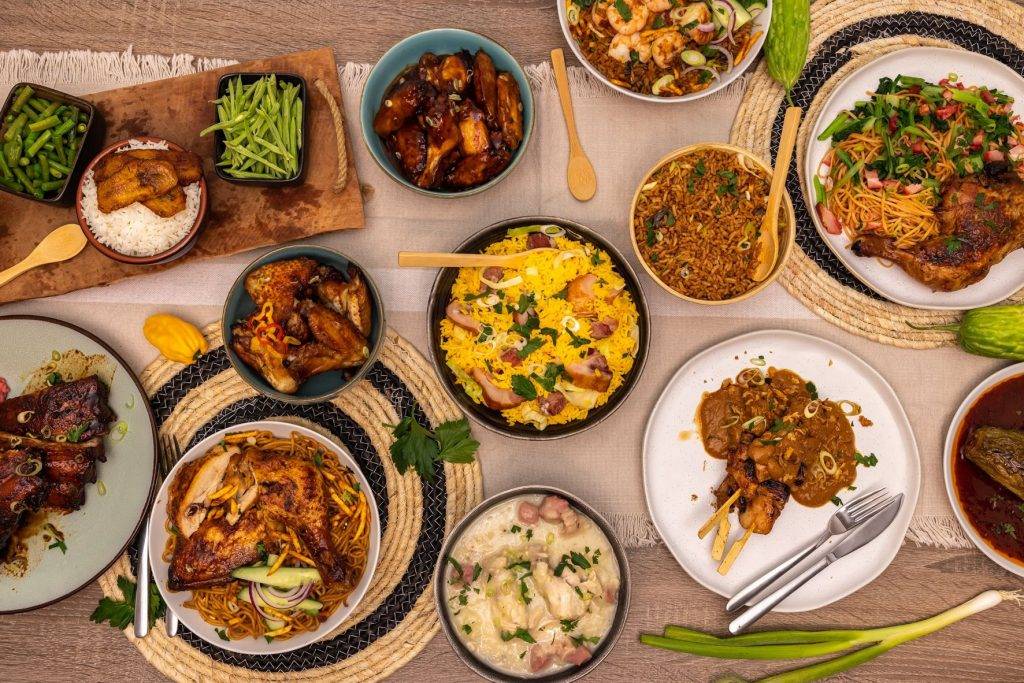
Conclusion
Surinamese Creole cuisine is a delicious and diverse culinary tapestry that weaves together the rich flavors and techniques of various ethnic groups. The influences of indigenous people, African slaves, Indian indentured laborers, and Chinese migrants have shaped the unique gastronomic landscape of Suriname. With an array of key ingredients, traditional dishes, street food culture, and fusion cuisine, Surinamese Creole cuisine celebrates the country’s cultural diversity and national identity. From the sizzling street food stalls to the festive celebration dishes, Surinamese cuisine continues to evolve and captivate the taste buds of locals and visitors alike. So, whether you’re exploring the vibrant culinary scene of Paramaribo or enjoying a traditional Surinamese dish in your own kitchen, prepare to savor the flavors that define Surinamese Creole cuisine.
